HANOI - They walk with poise and grace through the city streets. Some guide heavily loaded bicycles, others balance wares at either end of a bamboo pole. They are the urban street vendors of Vietnam, mostly rural women who rarely see their families, selling everything from pineapple and bok choy, to teacups and plastic brooms. They tell their stories without self-pity.
“My husband had a job as a driver but he got sick and has to stay home now,” says a woman with a smooth, bright face, selling flowers to passing motorists from a bicycle cart. “He looks after the children and raises pigs and chickens. He tells me, ‘Just a few more years — until the children are grown up. Then you can stay at home with me. It won’t matter if we are poor.’ It’s sad that we have to be apart like this when we are young. But we have to accept it.”
The seller appears in a video with others as part of an exhibit at the Vietnamese Women’s Museum, in the Old Quarter of Hanoi, the Vietnamese capital and northern metropolis. For privacy reasons no names are given, but they speak so openly and with such directness that few viewers can pass a Vietnamese vendor in the street again without a tingling of admiration and compassion.
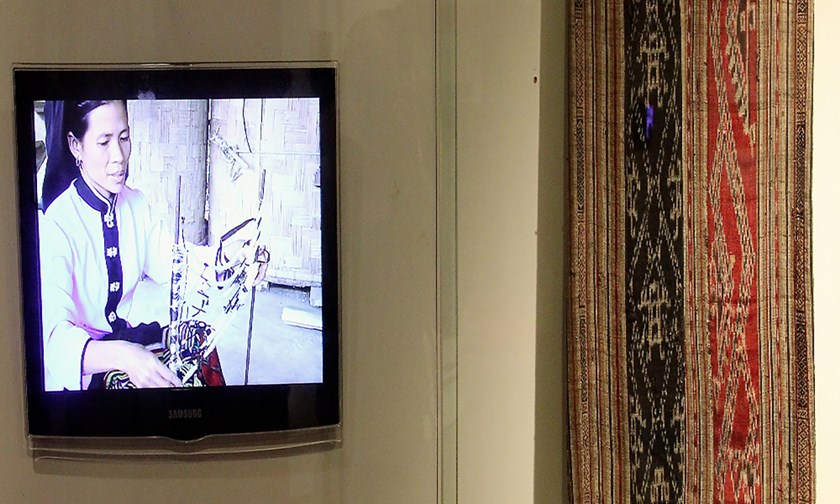
Above: The museum delves into Vietnam's rich history of silk and other fabrics.
The entire museum arouses emotion. It is one of Hanoi’s top tourist draws, for the stories it tells and for the beauty of its objects. After a sweeping renovation, the museum reopened in 2010 with fresh, modern displays that depict the lives of Vietnamese women under three general themes: family life, clothing and fashion, and resistance to wars of invasion. All Vietnamese cultures are included. The Viet people make up 88 per cent of the country’s population, with 53 other cultural groups and hill tribes making up the balance. At the women’s museum, the full diversity can be seen.
The “Women in Family” section includes the work of women who remain in their rural villages. A description of rice harvesting runs next to an arrangement of tightly woven harvesting baskets. A panel on rice cutting complements a display of hand-carved wooden cutting tools that could double as small art objects. Elaborate engagement and wedding rituals are illustrated, and a child-care exhibit includes an array of highly decorated children’s hats, some adorned with amulets meant to keep the child safe from evil spirits.
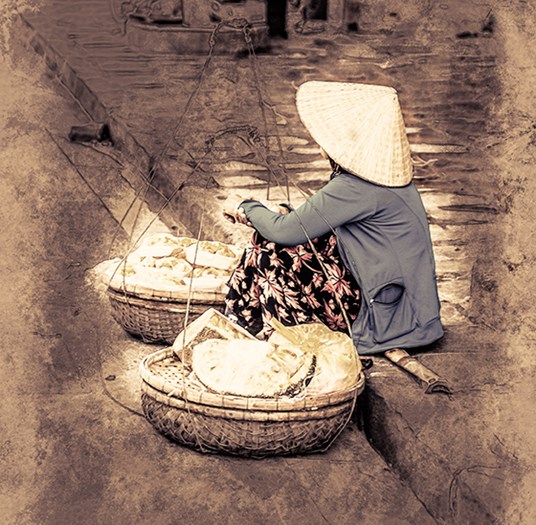
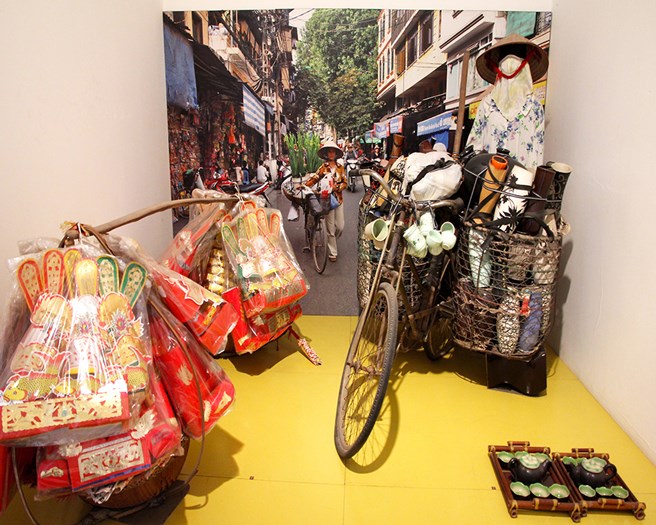
Above: The female street vendors of Hanoi are well represented in the museum.
“My favourite section is ‘Women in Family,’ because it shows Vietnamese women as keepers of the character of Vietnam,” says the museum’s deputy director, Nguyen Hai Van. “Foreign visitors seem to find the ‘Women in History’ section the most compelling.”
Women in History includes a tribute to Ngoc Phuong, the first doctor to successfully apply the in vitro fertilization technique in Vietnam in 1997, and to diplomat Ton Nu Thi Ninh, who also established her own non-governmental organization, the Global Vietnamese Women’s Network.
Mostly, however, the section honours many of the courageous women who helped defend the country in war. Ancient battles against the Han Chinese and Song Chinese are mentioned, but space is mainly given to struggles against the French colonialists (1946–1954) and the U.S.-backed Republic of South Vietnam regime (1954–1973).
One panel pays tribute to Võ Thi Sáu, who joined the Dat Do Volunteer Police at 14, was arrested in Saigon during the French time, and later executed. Another panel honours Huynh Thi Ngo, who at the age of 21, in 1971, led anti-American protests that destroyed 52 U.S. army vehicles. A third display shows Võ Thi Thang, a young woman sentenced in 1968 to 20 years in prison for attempting to assassinate a neighbourhood tyrant.
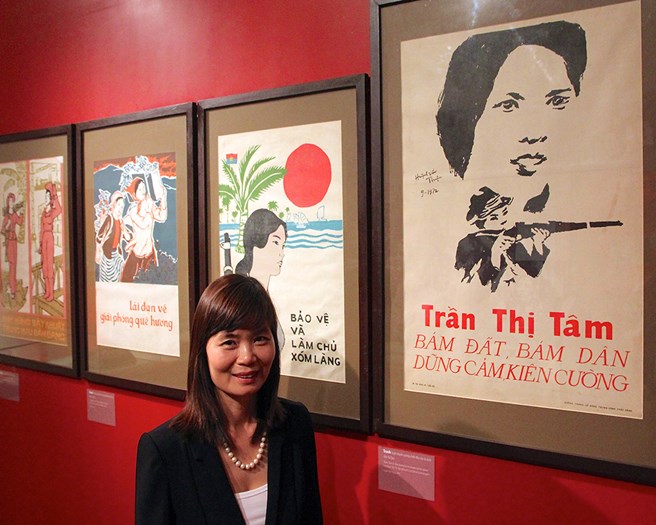
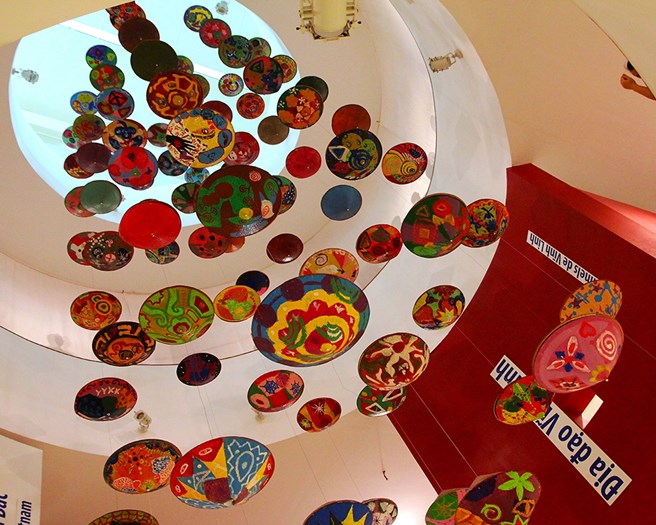
Left: Museum deputy director Nguyen Hai Van. Right: The museum entrance is colourful conical hats.
Her smile and her famous declaration — “I do not believe that you have the authority to impose this sentence,” the caption says — became the symbol of heroism for Vietnamese women.
In 1994, the national government established the honorary title of “Heroic Mother of Vietnam,” conferred on every mother who lost more than two children to war, or lost their husband and at least two children, or lost their only child.
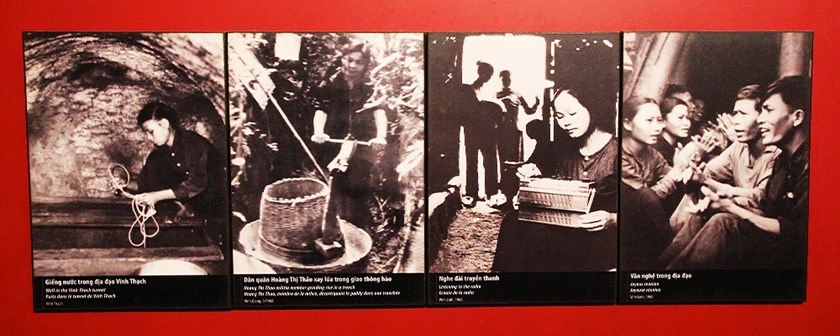
Above: The women who served in the Vietnam War with the U.S. hold a place of honour in the museum.
One exhibit shows how Vietnamese artist Dang Ai Viet travelled throughout the country by motor scooter to paint portraits of 1,000 such recipients.
The museum’s top floor celebrates clothing, costume, and fashion — from neck bangles, to head ornaments, to a vast array of hand-woven and hand-dyed fabrics.
Taken together, the museum showcases a stunning collection.
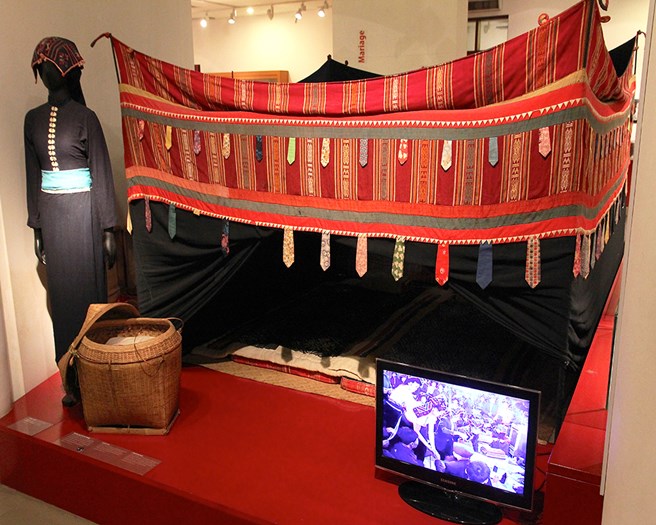
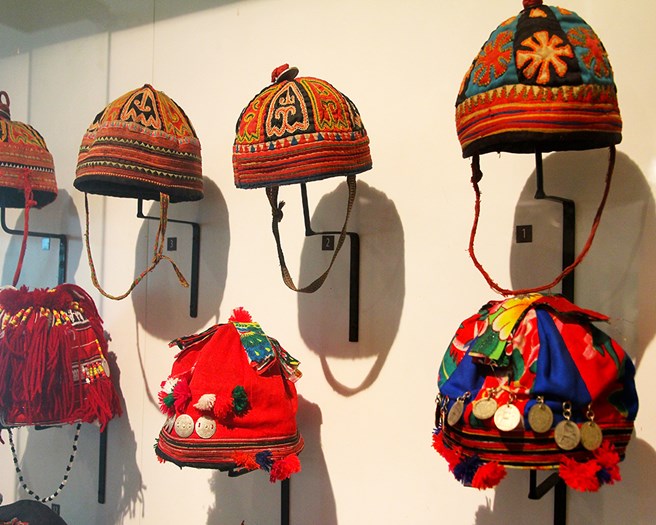
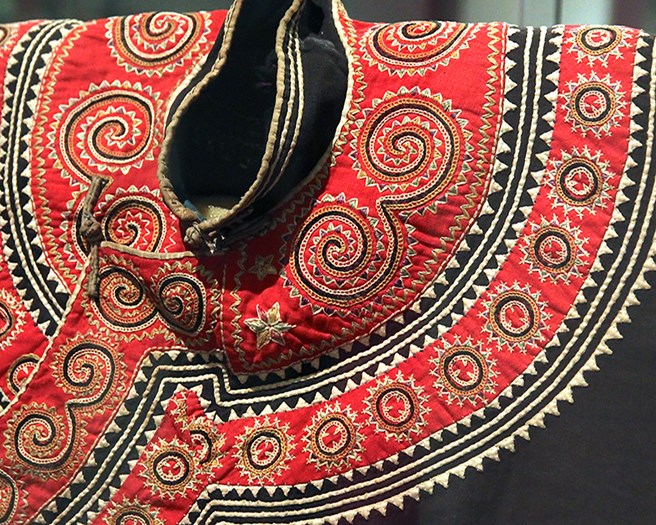
Above: The museum displays the various hats used throughout Vietnam's history.
Help in creating it came from two exceptional independent curators — New York-born Mark Rapoport and his Vietnamese business partner Nguyen Thi Nhung. Rapoport owns, and both operate, the 54 Traditions Gallery, a retail outlet three kilometres north of the museum. Some of its holdings are of museum quality, creating a rare opportunity for visitors to Hanoi that the museum does not mention.
Museum-goers can look at and learn about prized cultural objects associated with Vietnamese women. Gallery-goers can touch such objects and purchase them.
Information
The Vietnamese Women’s Museum is located at 36 Lý Thường Kiệt, Hang Bai ward / 54 Traditions Gallery, 30 Hang Bun / Tour East Holidays offers many exciting tours to Vietnam. Go to http://www.toureast.com for more information.
About the Author
As the Toronto Star’s world-music reporter, John Goddard travelled frequently to Africa to hear singers everywhere from Khartoum to Timbuku. Afterward, he started wandering closer to home. By foot and subway, he reached all of Toronto’s small heritage museums and wrote the book Inside the Museums: Toronto’s Heritage Sites and Their Most Prized Objects. He then rode the intercity GO bus to write the companion volume, Inside Hamilton’s Museums. Both local and foreign destinations continue to draw him. As a longtime Asia Pacific Foundation of Canada Media Fellow, he recently resolved to delve deeper into the delights of Southeast Asia.